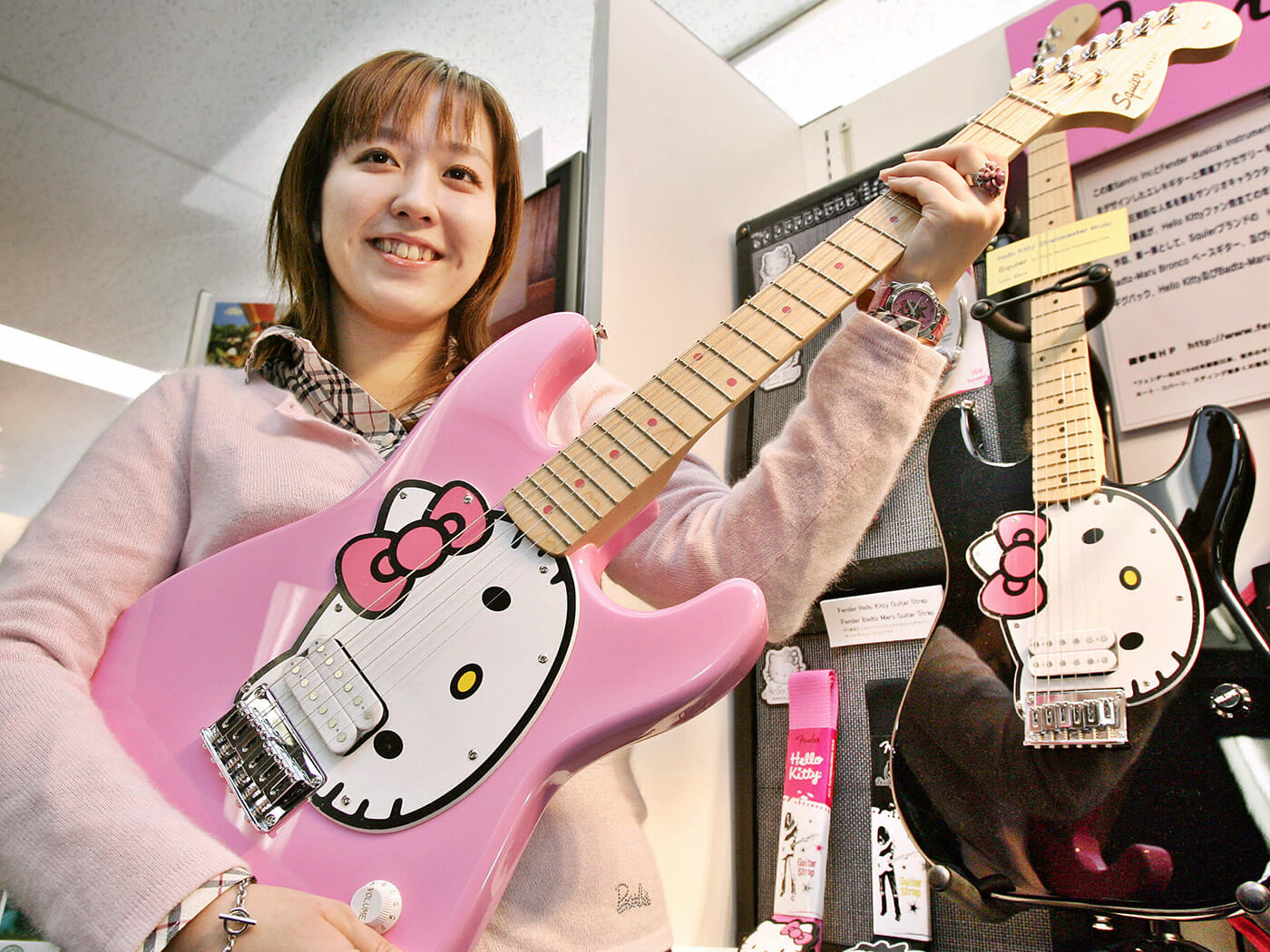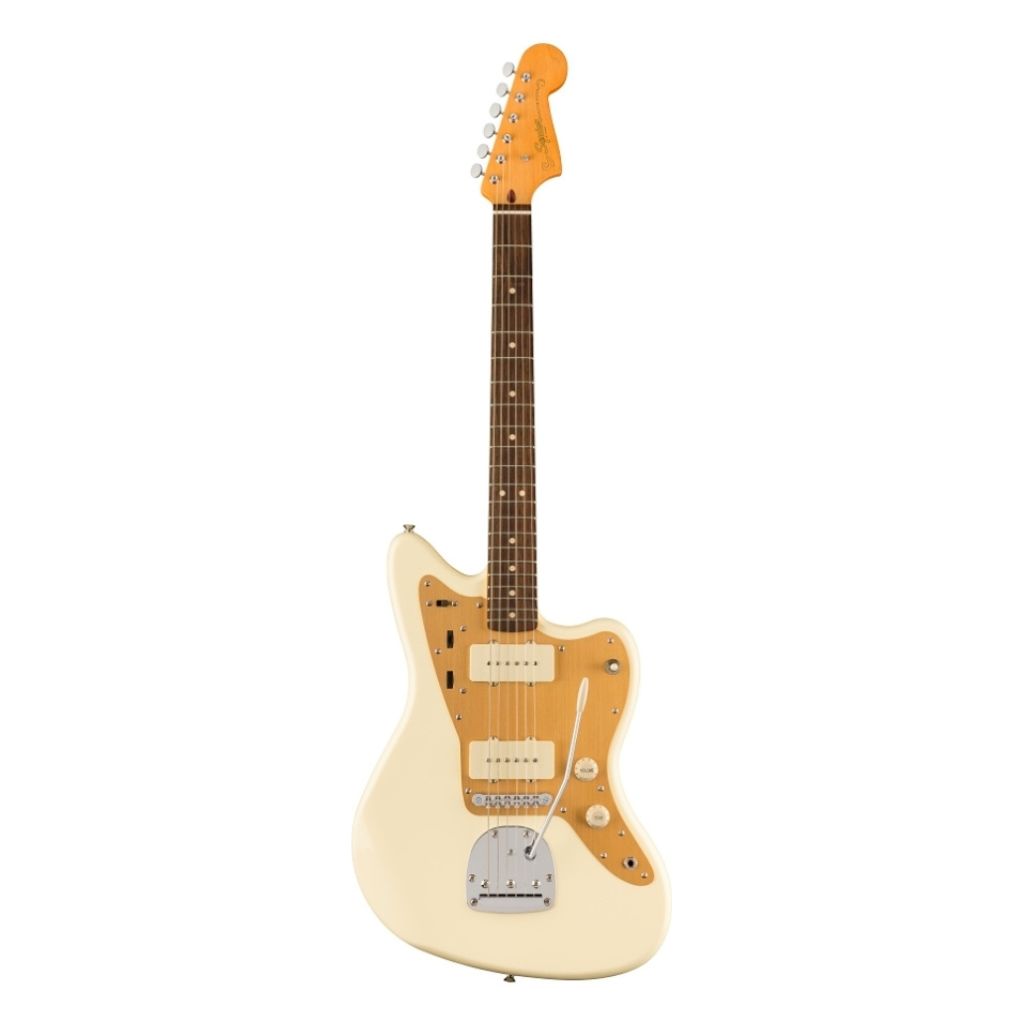Related Tags
A Brief History of Squier Guitars
Fender’s budget brand has a fascinating history all of its own – including origins that date back to the 1800s and a man known as ‘the American Stradivarius’

A Squier Sonic Mustang headstock (Image: Adam Gasson)
Most guitarists know the Squier brand by its association with Fender – hell, if you’re reading this there’s a fair chance one of your first guitars was a Squier. This is because generally, Squier is the import brand that sells budget friendly Fender-style guitars under Fender’s corporate umbrella. However, Squier wasn’t bought by Fender until 1965 – a whopping 75 years after the company was initially founded, so what about before that?
- READ MORE: A Brief History of Epiphone Guitars
Well, prior to this, Squier was an independent company with its own history of making high-end instruments and strings. The brand’s path to becoming an electric guitar manufacturer was an interesting journey.
Squier Guitars started out in 1890, in Battle Creek Michigan, when a man named Victor Carroll Squier founded the VC Squier Company. Victor Carroll Squier’s father, Jerome Bonaparte Squier, emigrated to the US from England where he had honed his skills as a gifted violin maker. He opened up a shop in Boston where he would come to be known by some as ‘the American Stradivarius’.
Squier was said to have built around 600 violins in his career, many of them still highly sought after by collectors. One was valued at $100,000 in 2007. Squier handed down his trade to Victor, who eventually moved back to Battle Creek Michigan in 1890, where his family had initially settled upon entering the country. There, he set up a shop to build and repair violins in the area. Victor’s violins are also highly sought after, and lauded for their tonal excellence.

Unfortunately, there weren’t as many violins in Michigan as there were in Boston, so Squier found another revenue stream for his new business – making strings for violins, banjos, and guitars. Up until then, most high-quality strings for violins had to be imported, so it was an important niche to fill.
Later on, when the age of the electric guitar dawned in the 1930s, Squier began making strings for the era’s new electric instruments; the company further diversified by selling pianos, radios and phonograph records, which it would continue to do until the decision was made to divest itself of all non-string product in 1961.
Fender Instruments came into the Squier story in the early 1950s, when Leo Fender started making a new style of guitar – a solidbody electric guitar that would eventually come to be known as the Telecaster. The VC Squier Company started supplying Fender with strings sometime in the early 1950s and became an official original equipment manufacturer for Fender in 1963.
Guitar companies need a lot of guitar strings, so in one of Leo’s final acts as the owner of Fender, he arranged to purchase the VC Squier company outright in early 1965 – shortly afterwards, Leo would leave and the Fender company itself would be sold to CBS.

Fender continued to use Squier strings until around 1975, when the Fender name would replace it on the packets and the brand would be retired. But this was not the end for Squier, not by a long shot – in fact in less than a decade it would become one of the most important brands in Fender’s portfolio.
Toward the end of Fender’s CBS-era [1965-1985], the company was struggling with quality control issues and were losing the fight against lower cost copies of their guitars on the market – primarily from the Asian market. In 1981, the company brought in new management [formerly from the Yamaha company] to deal with these issues. One member of the executive team, Roger Balmer, recalled in an interview with Guitar World, “Fender had about 15 percent of the worldwide Fender-type market, and this was declining. The other 85 per cent was a variety of Fender copies and Fender-like products.”
The ability to sue these other brands had proved to be somewhat difficult – in 1977 Gibson sued Ibanez regarding the headstock shape and that was settled out of court while Ibanez continued to make similar shaped guitars.
So, in step with the old adage of “if you can’t beat them, join them”, the new executive team decided to move production to Japan and offer a cheaper priced guitar that was made under the Fender banner. In 1982, Fender Japan Ltd. was founded and began making guitars with the same companies that had been making the copies [Kanda Shokai and Yamano Music]. The instruments were built by FujiGen Gakki, which famously also made Ibanez guitars.

Of course, Fender didn’t want to damage the image of Fender as a maker of premium American-made instruments at the time – so in order to market these Japanese-made instruments, the company turned to an old friend: Squier.
In 1982 the first Squier guitars entered the market – it’s notable that on these early instruments, the Fender logo was prominently featured in the usual place with a small ‘Squier’ logo on the end of the headstock. That would soon be reversed and would eventually become the configuration we see today.
The resurrection of Squier was not without some challenges however – Lonely Is The Night singer Billy Squier allegedly sued Fender for use of the name Squier, even though the company had been around long before Billy was born. A settlement out of court was rumoured but never confirmed.
Overall, the development of Squier guitars served Fender well during the transition from the CBS-era to the modern Fender Musical Instruments Corporation (FMIC). During this period, Fender couldn’t build guitars in the Fullerton factory anymore, and had to construct a whole new one in Corona, California. This understandably put a big strain on production in the States, and the brand relied on the Japanese guitars to keep them afloat during this transition in 1985.

In 1987, Squier production moved from Japan to Korea, and then to China and Indonesia, where Fender’s budget guitars are still made to this day. The spirit of those early Squiers is alive and well in the wonderful and unique instruments that come out of Fender Japan to this day.
Squier has also gone from strength to strength in the years since – the brand continues to make guitars based on Fender classics at very affordable price points, but in recent years it has also become an interesting brand in its own right, building some of the most interesting and downright weird guitars in the Fender catalogue. So whether you’re after a vintage-style Telecaster or an active humbucker-loaded Starcaster – or indeed the notorious Hello Kitty Strats – Squier has you covered and long may that continue.

